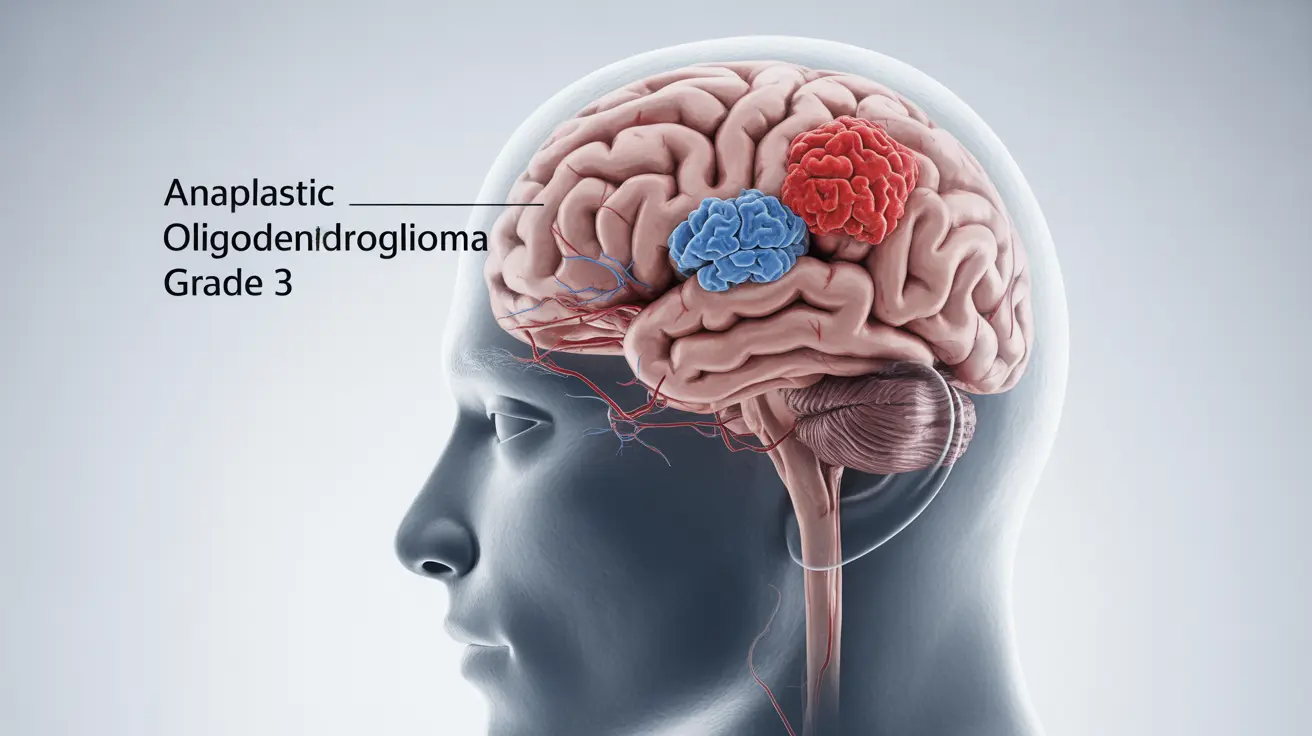Anaplastic oligodendroglioma grade 3 is a rare but serious type of brain tumor that develops from specialized brain cells called oligodendrocytes. Understanding the survival rates, treatment options, and factors affecting prognosis is crucial for patients and their families facing this diagnosis.
This comprehensive guide explores the key aspects of grade 3 anaplastic oligodendroglioma, including survival statistics, treatment approaches, and important factors that influence patient outcomes.
Understanding Survival Rates and Prognosis
The survival rate for anaplastic oligodendroglioma grade 3 varies significantly among patients, depending on several factors. Recent studies indicate that patients with specific genetic markers, particularly the 1p/19q codeletion, tend to have more favorable outcomes. Five-year survival rates typically range from 50% to 80%, though individual cases can vary considerably.
It's important to note that survival statistics are based on historical data and may not reflect the latest treatment advances or individual circumstances. Many patients are living longer and experiencing better quality of life due to improved therapeutic approaches.
Early Warning Signs and Symptoms
Recognizing the symptoms of anaplastic oligodendroglioma is crucial for early diagnosis. Common signs include:
- Persistent headaches that worsen over time
- Seizures
- Changes in vision or speech
- Difficulty with balance and coordination
- Cognitive changes or memory problems
- Personality changes
- Weakness or numbness in limbs
Treatment Approaches and Their Impact
Surgery
Surgical resection is typically the first-line treatment for accessible tumors. The extent of tumor removal can significantly impact survival outcomes, with more complete resections generally associated with better prognosis.
Radiation Therapy
Following surgery, radiation therapy plays a crucial role in targeting remaining cancer cells. Modern techniques allow for precise targeting while minimizing damage to healthy brain tissue.
Chemotherapy
Chemotherapy, often using drugs like PCV (procarbazine, CCNU, and vincristine) or temozolomide, has shown significant effectiveness, particularly in patients with specific genetic markers.
Factors Influencing Patient Outcomes
Age and Overall Health
Younger patients and those in better overall health typically have more favorable outcomes. However, successful treatment is possible across all age groups with appropriate therapeutic approaches.
Genetic Factors
The presence of certain genetic markers, particularly the 1p/19q codeletion, can significantly improve treatment response and survival rates. Regular molecular testing helps guide treatment decisions.
Treatment Response
Individual response to treatment varies, and monitoring tumor progression through regular imaging and clinical assessments helps healthcare teams adjust treatment plans as needed.
Long-term Management and Follow-up
Long-term monitoring is essential for managing anaplastic oligodendroglioma grade 3. Regular follow-up appointments, imaging studies, and potential adjustments to treatment plans help optimize outcomes and detect any signs of recurrence early.
Frequently Asked Questions
- What is the average survival rate for someone diagnosed with anaplastic oligodendroglioma grade 3?
The five-year survival rate typically ranges from 50% to 80%, with variations based on individual factors such as genetic markers, extent of surgical removal, and response to treatment.
- What are the symptoms and early warning signs of anaplastic oligodendroglioma in adults?
Common symptoms include persistent headaches, seizures, vision changes, speech difficulties, balance problems, cognitive changes, and weakness in limbs. Early detection and treatment are crucial for better outcomes.
- What are the main treatment options for anaplastic oligodendroglioma grade 3, and how do they affect prognosis?
Primary treatment options include surgery, radiation therapy, and chemotherapy. The combination of these treatments, particularly in patients with favorable genetic markers, can significantly improve survival rates.
- How does age, tumor genetics, or surgery influence the survival outcomes for people with grade 3 oligodendroglioma?
Younger age, presence of 1p/19q codeletion, and greater extent of surgical removal are associated with better outcomes. These factors help determine treatment approaches and influence overall survival rates.
- What should patients and caregivers know about the long-term outlook and recurrence risk after treatment for anaplastic oligodendroglioma?
While recurrence is possible, regular monitoring and appropriate treatment can help manage the disease long-term. The outlook varies by individual, but many patients experience extended survival with current treatment approaches.




